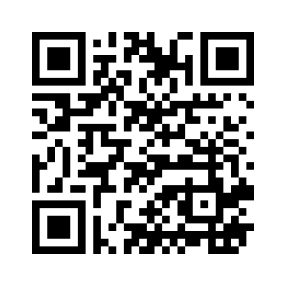Have you ever found yourself in a dream, suddenly aware that you’re dreaming? That moment of realization—when the impossible landscape around you shifts from convincing reality to recognized fantasy—is the gateway to lucid dreaming. Lucid dreaming isn’t just a fascinating sleep phenomenon; it’s a skill that can be learned, practiced, and mastered to transform your nighttime experiences into adventures limited only by your imagination.
What Is Lucid Dreaming?
Lucid dreaming occurs when you become conscious during a dream that you are, in fact, dreaming. Unlike regular dreams where you passively experience events, lucid dreams offer something extraordinary: the ability to control and direct your dreamscape. From flying over cities to conversing with historical figures, the possibilities within a lucid dream are virtually limitless.
Scientific research validates this phenomenon. Studies using EEG measurements show distinct brain wave patterns during lucid dreams—a unique blend of REM sleep characteristics combined with aspects of wakefulness. This neurological signature confirms what practitioners have known for centuries: lucid dreaming represents a hybrid state of consciousness where the dreaming mind awakens without the body following suit.
The Science Behind Lucid Dreaming
The human brain during sleep cycles through different stages, with REM (Rapid Eye Movement) sleep being most associated with vivid dreaming. During normal REM sleep, the prefrontal cortex—responsible for logical thinking and self-awareness—remains relatively inactive. However, in lucid dreams, this region shows increased activity, explaining why dreamers can suddenly recognize the dreamstate and exercise critical thinking within it.
Neuroscientist Dr. Stephen LaBerge of Stanford University pioneered much of the scientific validation of lucid dreaming through his research at the Sleep Research Center. His studies demonstrated that lucid dreamers could communicate with researchers through predetermined eye movement patterns while remaining asleep, proving that consciousness during dreams was real and measurable.
This phenomenon isn’t merely a curiosity but represents a unique opportunity to understand consciousness itself. As researcher Allan Hobson notes, lucid dreaming offers “a unique opportunity to explore the construction of consciousness” by providing a window into how our brains create reality.
Benefits of Lucid Dreaming
The appeal of lucid dreaming extends far beyond novelty. Practitioners report numerous benefits:
1. Overcoming Nightmares
Perhaps the most therapeutic application of lucid dreaming involves confronting and transforming nightmares. By recognizing a nightmare as a dream, you gain the power to face dream threats, change frightening scenarios, or simply wake yourself up. This technique has proven so effective that it’s now used as a treatment for recurring nightmares and PTSD-related sleep disturbances.
2. Creativity Enhancement
Many artists, writers, and musicians have tapped into lucid dreams as a source of creative inspiration. Salvador Dalí famously used a dream-based technique to inspire his surrealist paintings, while filmmaker Christopher Nolan’s hit movie “Inception” was influenced by his own experiences with lucid dreaming.
The creative potential makes sense: lucid dreaming gives access to the unconscious mind—where novel connections and ideas often originate—while maintaining the conscious awareness needed to remember and implement these insights.
3. Skill Practice
Fascinating research suggests that practicing physical skills within lucid dreams can improve real-world performance. Studies with athletes show that mental rehearsal during lucid dreams activates many of the same neural pathways as physical practice. Basketball players who practiced free throws in lucid dreams, for instance, demonstrated measurable improvement in their waking performance.
4. Psychological Exploration
Lucid dreaming provides a unique laboratory for psychological exploration. Dreamers can interact with different aspects of their psyche, represented as dream characters, or revisit and reprocess emotional memories in a controlled environment. This application has led some therapists to incorporate lucid dreaming techniques into treatment approaches for anxiety and other psychological challenges.
How to Induce Lucid Dreams: Proven Techniques
While spontaneous lucid dreams do occur, most practitioners develop this skill through consistent practice of specific techniques:
Reality Testing
Reality testing involves regularly questioning whether you’re dreaming throughout your day. By forming this habit during wakefulness, it eventually carries over into your dreams.
Effective reality tests include:
- The Hand Test: Look at your hand and try to push your finger through your palm. In dreams, your finger might pass through.
- Text or Clock Check: Look at text or a digital clock, look away, then look back. In dreams, text and numbers often change when you’re not looking at them.
- Breathing Test: Pinch your nose and try to breathe. In dreams, you’ll still be able to breathe even with your nose pinched.
Practice these tests 10-15 times daily for best results.
Dream Journaling
Perhaps the most foundational practice for aspiring lucid dreamers is maintaining a dream journal. Immediately upon waking, record as many details from your dreams as possible. This practice dramatically improves dream recall and helps identify recurring dream signs—specific elements that appear regularly in your dreams.
Research shows that consistent dream journaling can double or even triple dream recall within just a few weeks, creating more opportunities to recognize when you’re dreaming.
MILD Technique (Mnemonic Induction of Lucid Dreams)
Developed by Dr. Stephen LaBerge, the MILD technique leverages the power of intention and has shown impressive success rates in scientific studies:
- As you’re falling asleep, recall a recent dream in detail
- Identify a “dream sign” (something that indicates you’re dreaming)
- While falling asleep, repeat to yourself: “Next time I’m dreaming, I will remember I’m dreaming”
- Visualize yourself becoming lucid in the dream you recalled
A 2017 study published in the journal Dreaming found that participants using MILD experienced lucid dreams on 46% of nights when they practiced the technique properly—far exceeding the success rates of most other methods.
Wake Back to Bed (WBTB)
This powerful technique involves:
- Sleeping for 5-6 hours
- Waking up and staying awake for 30-60 minutes
- Going back to sleep while performing MILD or other induction techniques
WBTB works by sending you directly into REM sleep (where dreams primarily occur) while your mind remains relatively alert from the period of wakefulness. Studies show this method can increase your chances of lucid dreaming by up to 60% compared to going to sleep normally.
Advanced Lucid Dreaming: Maintaining and Controlling Your Dreams
Once you achieve lucidity, the next challenges are maintaining awareness and learning to control the dreamscape:
Stabilization Techniques
New lucid dreamers often wake up shortly after becoming lucid due to excitement. These techniques help extend your dream:
- Hand Rubbing: Rubbing your hands together in the dream creates sensory input that helps stabilize the dream state.
- Spinning: Spinning your dream body like a top prevents the dream from dissolving.
- Verbal Commands: Saying “increase clarity now” or similar phrases can strengthen the dream environment.
Dream Control Methods
Controlling dream elements typically progresses through several levels:
- Expectation: Simply expecting something to happen often makes it occur
- Finding Objects Around Corners: Believing an object is just around the corner often makes it appear
- Using “Dream Technology”: Dream devices like remotes or magic wands can help create changes
- Direct Manifestation: Advanced practitioners can change the dreamscape through pure intention
A study in the International Journal of Dream Research found that 82% of lucid dreamers could successfully manipulate their dream environment after several months of practice.
Common Challenges and Solutions
“I Can’t Remember My Dreams”
Solution: Begin with dedicated dream journaling. Place your journal beside your bed and record even the smallest dream fragments. Additionally, affirm to yourself before sleep: “I will remember my dreams tonight.” Within 2-3 weeks, most people see significant improvement in recall.
“I Become Lucid But Immediately Wake Up”
Solution: This common issue results from the excitement of achieving lucidity. Practice emotional neutrality when you become lucid by immediately focusing on your breathing or repeating “I’m dreaming but staying calm.” The stabilization techniques mentioned earlier are also crucial.
“I Can’t Become Lucid Despite Trying Various Methods”
Solution: Consistency outweighs intensity in lucid dream practice. Rather than trying many techniques sporadically, choose one method and practice it daily for at least three weeks. The Wake Back to Bed technique combined with MILD shows the highest success rates for beginners and is worth focusing on initially.
Tools and Apps for Lucid Dreaming
Technology offers additional support for aspiring lucid dreamers:
- Dream Journaling Apps: Applications like “Dreamly” help track dreams and identify patterns that may trigger lucidity.
- Light-Up Sleep Masks: Devices like the “Remee” or “Neuroon” detect REM sleep and produce light cues visible through closed eyelids, signaling to the dreamer that they’re dreaming.
- Brainwave Entrainment: Audio programs designed to induce brain states conducive to lucid dreaming during the hypnagogic (falling asleep) state.
The Ethical Dimension of Dream Control
As with any powerful tool, lucid dreaming raises ethical considerations. Dream researcher Robert Waggoner suggests approaching lucid dreaming with respect rather than merely as entertainment. He advocates occasionally asking the dream itself for guidance or insight rather than always imposing control.
This balanced approach—viewing lucid dreams as a dialogue with deeper aspects of consciousness rather than simply a playground—often leads to the most profound and meaningful experiences.
Conclusion: Your Journey Into Lucid Dreaming
Lucid dreaming represents one of the most accessible altered states of consciousness, requiring no special equipment or substances—just dedication and practice. Whether you’re seeking creative inspiration, psychological insight, or simply the thrill of exploring impossible worlds, the techniques outlined here provide a roadmap to mastering this remarkable skill.
Remember that consistency is key. Most practitioners need several weeks or months of regular practice before experiencing their first induced lucid dream. However, that moment of realization—when the dream world suddenly opens to conscious exploration—is well worth the effort.
Tonight, as you drift toward sleep, carry the intention of lucidity with you. Who knows what worlds await behind your closed eyelids? The adventure of conscious dreaming begins now.






